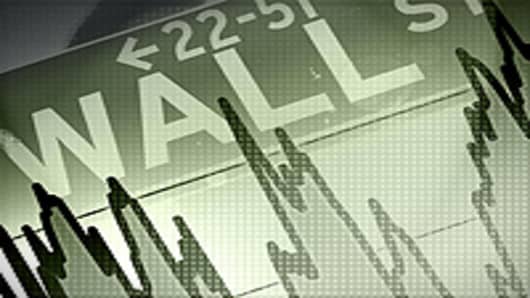In the interest of giving the people what they want, we decided to get Cort Gwon, director of trading strategies and research at FBN Securities, to weigh in with investment strategies for the most popular stocks (ranked by search volume on TheStreet).
The list is a mixed bag of familiar names. Not surprisingly, the stocks themselves tend to be among the volume leaders for their respective exchanges as well.
The financial sector is represented by Citigroup and Bank of America, which are regularly at the top of the New York Stock Exchange's volume chart.
Intense reader interest in Apple is no shocker either, given the company's passionate following, and the news surrounding the release of the iPad in the spring and later the iPhone 4 during the summer.
American icon Ford Motor, which last week said July sales were up 5% year-over-year, is also heavily followed by TheStreet's readers.
Rounding out the list is BP, a constant presence in the headlines in the wake of the Deepwater Horizon oil spill in the Gulf of Mexico on April 20.
While many investors are long these stocks, Gwon was willing to offer some alternative approaches to investing in the equity of these companies. FBN Securities doesn't have ratings on any of these companies.
FBN customers come to me and frequently ask what they should do with a stock," Gwon says. "I review each request and tell them what the best approach would be in their situation."
5) Bank of America:
According to recent Thomson Reuters data, 20 of the 28 analysts covering Charlotte, N.C.-based Bank of America have either "strong buy" or "buy" ratings on the stock. The shares haven't cooperated for long-term investors this year, however, and were down more than 17% in 2010 through Friday's close.
"The stock has been in a steady downward channel as housing sales slowed and financial reform has become law," Gwon says.
From a technical standpoint, Gwon thinks the shares look like they are poised for another leg down, although the trading in recent sessions points toward the stock building a flat trading base and that could be an opportunity.
(Bank of America, contd.)
"If a base is created, an investor can benefit from a covered call strategy — buying stock and selling an in the money call," Gwon explains.
"For example, buying the stock at $13.90 and selling the September 13 call for $1.20. The yield on the trade is 2.36% (21% annualized) as long as the stock holds 13 by September expiration. Breakeven on the trade is $12.70, which is 8.6% lower than current prices."
4) Ford Motor:
After a tremendous run up nearly 60% in the past year, the view on Ford's stock is a bit more laid back. Half of the analysts covering the company (nine out of 18) have "hold" ratings, and FBN's Gwon says he has nothing dynamic to say about the shares.
The current median 12-month price target on the stock is $16, implying upside of more than 20% from last week's close, but that may be a bit ambitious given the ground the shares have already covered.
So what are other Ford shareholders doing? Institutional holders are mostly standing pat, or adding to their positions, according to Thomson Reuters data, but a number of insiders have opted to cash out some of their holdings with several officers exercising options and selling shares.
Since April, a number of company officers have sold stock in the $12 range.
3) BP:
The disaster stock of the year, BP finished last week down around 19% for the year. Analysts are mixed with six "buy" ratings and five "hold" ratings.
Gwon says the investment thesis for BP has shifted from an event-driven situation to a deep value stock with risk.
"Stocks usually rise when that transition takes place as there become less and less sellers as long term holders buy and hold," he says.
The stock has recovered some, but is still down about 30% from its 52-week high in January. Gwon proposes call options, which are relatively cheap right now.
"The September 40 calls are a cheap way to participate on the upside with some leverage," he says.
2) Citigroup
The stock is in positive territory in 2010 with a year-to-date return of around 22%, but it's pulling back since flirting with $5 back in April. Of the 21 analysts covering the bank, 11 are at either "buy" or "strong buy," seven are at "hold" and the remainder are at "sell" or "underperform."
Gwon likes a "buy-write" strategy for the banking giant. He suggests buying the stock for $4.10 then selling the September 4 calls for 21 cents.
"The yield on this trade is 2.82% until the September expiration (24% return annually)," Gwon says. "The investor receives this return if C[itigroup] is above $4 at September expiration."
- 20 Top Financial Stocks — at a Glance
Breakeven on the trade is $3.89, according to Gwon, but with the 200-day moving average at $3.88, he feels there is major support to stay above this number.
1) Apple
No wonder so many follow Apple. Like Ford, the shares are up almost 60% for the past year. Gwon notes, however, that the stock's trading range has narrowed considerably in the past couple of months.
"A play for a possible breakout of this trading range would be to buy a September straddle (call and put with the same strike) or strangle (call and put with a different strike)," Gwon says.
"September and October have traditionally been volatile months and with an uncertain economy, long volatility could be a winner in this environment."
- Apple, Peers & Rivals: Track 10 Top Tech Stocks
______________________________
Disclosures:
Disclosure information was not available for Borchardt or her company.


